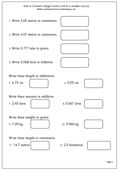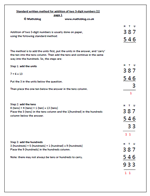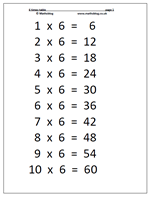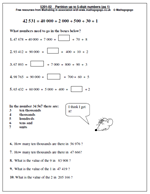With the Year 6 SATs all over and still a half term’s maths to get through there has never been a better time to introduce some investigations and puzzles. One of my favourites topics is the magic square, as it can be incredibly simple or extremely complex. This particular magic square is quite challenging as it involves adding negative and positive numbers, so it is a good check to see if children are confident dealing with negative numbers
The numbers to put into the squares are given on all three magic squares and on the first puzzle there is a clue that each row, column and diagonal adds up to -3.
One of the best strategies to use with these is to work out what the centre number should be and what the total of each row etc should be. it is also a good idea to cut out small squares with the numbers on so that they can be moved around the board with ease.
Please note that there are several different ways of solving these magic squares and just one way is shown on the answer page.











